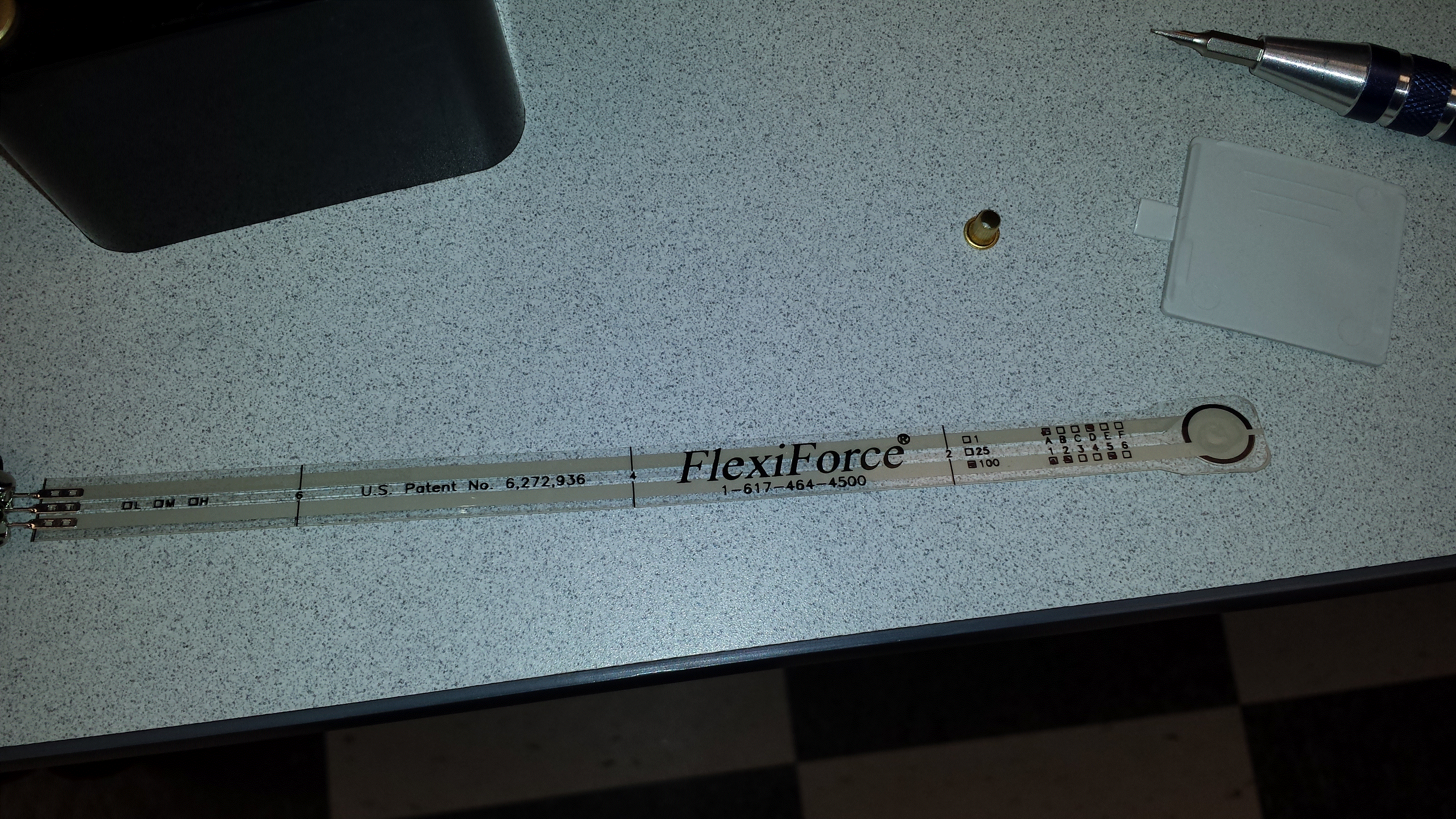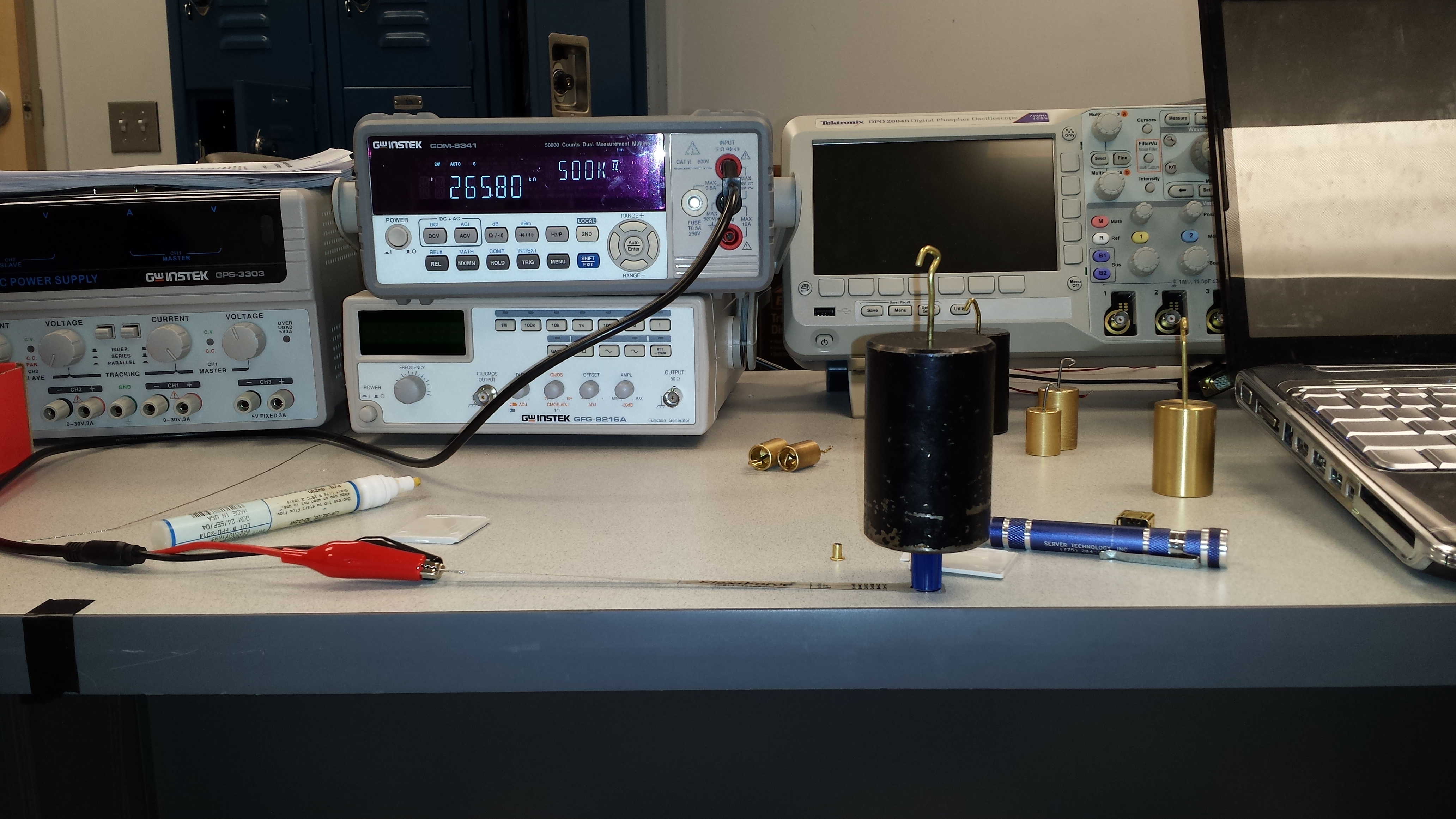Through an auction on ebay, we placed a bid and won an adjustable metal arm brace that is used for rehabilitation purposes. To improve on our design, which was previously plastic, we have decided to use this arm brace to support the arm with the large amount of torque provided by the servo motor. The arm brace is shown below.

Also, we have tested the 100 pound force sensing resistor (FSR), which is shown below.

The FSR works by providing a resistance depending on the force exerted in the sensing area. This is useful to show the user how much the user is lifting through the OLED display. In order to get accurate results, numerous different weights were placed on the FSR to determine the output resistance. The manufacturer states that the weight placed on the FSR is linear with the conductance of the FSR. Since, all of the weight must be placed on the sensing area, a small object that encompassed about the same area was placed below the desired weight. An example of how the testing was done is shown below.

A table of values and graph was plotted and is shown below.
Download – FSR Data

4 comments
Skip to comment form
how much did the brace cost?
how much did the flexiforce cost?
N
Author
The brace cost 25 dollars. (Ebay)
The flexiforce pressure sensor cost 19.95 dollars. (Sparkfun: https://www.sparkfun.com/products/8685)
How repeatable are these measurements? (accuracy/precision?)
Author
Some of the trials we did multiple times and noticed very different results (after slightly moving the small object that completely encompassed the sensing area). I believe that the accuracy of the results depends on the small object below the weight, making sure that it does not move out of place. Otherwise, under similar conditions, the FSR seems to be somewhat consistent.
However, a big problem with incorporating this idea into our project is where to place the FSR. The hand would be a good place to put it, but I believe this would require 6 FSRs (one on each finger, and one on the palm). That way if the user is holding an object in his or her hand, in any orientation the FSR will pick up pressure. This is a very costly idea, being that the FSR costs $19.95 each or $119.7 total.
We’re instead looking into analyzing the sEMG signals and indicating to the user how heavy the object is through our external OLED display.